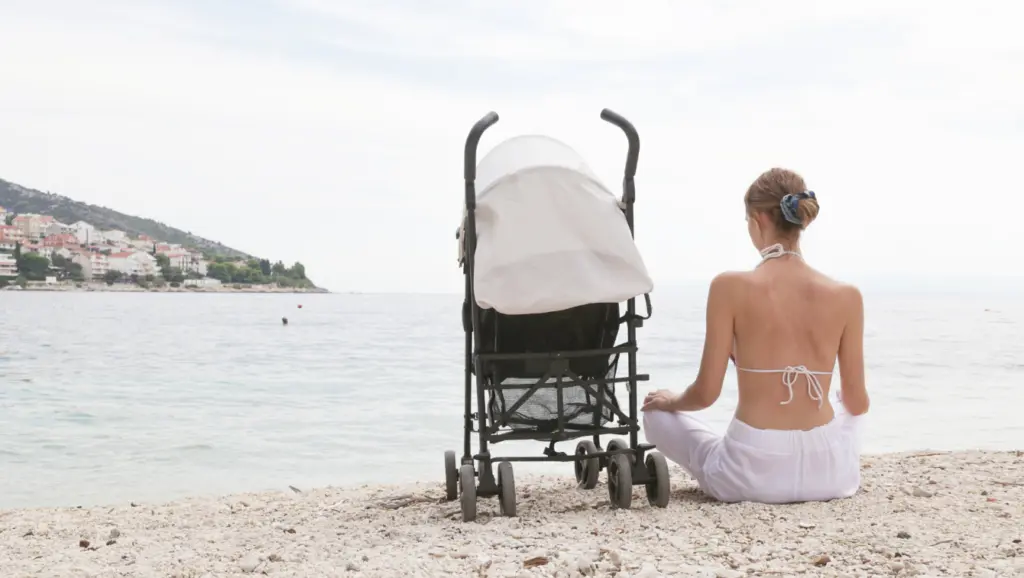Pregnancy and childbirth could make a woman’s body experience tremendous changes over the course of a few months and one of the challenges after childbirth is post-partum pelvic pain. These changes are temporary and soon after giving birth, the body slowly transitions to the pre pregnancy phase. While most of these happen unnoticed, there are some that will cause pain and discomfort, specifically in the pelvis, hip or groin areas. But do not panic, because pain in these areas, especially immediately postpartum , is very common as the muscles and tissues heals, and the pelvis organs are shifting back to the prepregnancy position.
According to medical professionals, the signs and symptoms that every woman may encounter vary. Most women who encounter extreme postpartum pelvic pain are those who engage in extreme physical activities to soon after giving birth,when the pelvic floor and abdominal muscles are not completely recovered. It is not a one-size-fits-all situations, just like your pregnancy, and it is best to pay attention to your body to identify what you are going through.
Aside from seeking advice from your health practitioner, it is highly beneficial for new moms to have their pelvic floor checked and evaluated by a physical therapist after being given clearance to resume sexual and other physical activities. This serves as an early intervention that can help new moms return to live actively without risking pelvic injuries.
Your physical therapist may suggest a few activities to get involved in and some to avoid to help plan your day and avoid pain altogether.
Be as active as possible within your pain limits.
Avoiding all possible activities can cause just as much pain and discomfort as moving around. A sedentary lifestyle after delivery will not help with the pain, as it can only make it worse when you finally decide to move.
Continue to go on with your day by day activities, but make sure you do not push yourself to perform activities that will make the pain worse. Get help with any of your usual activities that cause pain and discomfort. It is best to have someone around to assist you to avoid further strain on your pelvic floor.
Rest as much as you can.
Have the right balance between your physical activities and rest. As mentioned above, it is best to have someone around to help you with your chores and other daily activities not just to help avoid straining your pelvis, but also to allow time for rest as much as you can.

Do not stress when getting dressed.
A daily activity that needs plenty of effort in bending, standing, twisting, and lifting is getting ready or dressed. Avoid bending over when putting shoes on or standing on one leg when putting on jeans. Have a stool handy when getting ready to avoid straining your pelvic muscles.
In addition, choose comfortable clothing – not just easy to wear but also to put on. Avoid wearing skin tight clothing that will make you bend and twist while putting them on or that will make you feel constricted while wearing them.
Find a comfortable position when you sleep.
When sleeping, your body becomes heavier than usual. If not done in the right position, you may end up waking up with sore muscles, and that includes your pelvis. Try to sleep on your side with a pillow between your legs to lift the pressure on your pelvic area.Also when turning in bed,use the same pillow to squeeze and stabilize your pelvis to alleviate any occurring pain on the pubic symphysis and pelvic floor.
Learn about sexual positions.
Before pregnancy, you may find yourself engaging in any and all kinds of sexual positions and experience minimal to no pain or discomfort at all. Now that many things have changed, you may want to consider learning different positions to avoid straining your pelvic muscles in doing the deed.

Use items that provide full support.
Bags and shoes, for example, can cause the most pressure on your pelvic muscles. Use a backpack to evenly distribute the weight on your body. Choose to wear flats that provide full support, and avoid wearing high heels or flip flops, as they pull your weight towards only one part of your body and they do not provide complete support.
Do not lift heavy objects.
Lifting heavy objects put pressure on many parts of your body, including your pelvis. Unless left without a choice, avoid lifting or pushing anything that puts stress over your pelvic region. If you are planning a move while your pregnant, it is best that you push it back until after you have recovered from childbirth or have someone else lift and push heavy items for you.
Your pelvic floor is a muscle that supports your bladder, uterus, and colon. During pregnancy, your ligaments, joints, tissues, and pelvic bones expand and loosen in preparation for the baby’s delivery. Most of these ligaments and joints remain loosened after delivery, and may stay until you stop nursing your newborn baby. This makes it more difficult for nursing mothers to avoid post-partum pelvic pain, but that does not mean it is totally impossible to do so, Take the necessary precautions and follow your therapist’s instructions to avoid post-partum pelvic pain and injuries.
Tribeca Physical Therapy is officially reopened for in-person physical therapy sessions and continues to offer Telehealth PT or Virtual PT. Call us at 2124068080 or message us and book your first session free.



